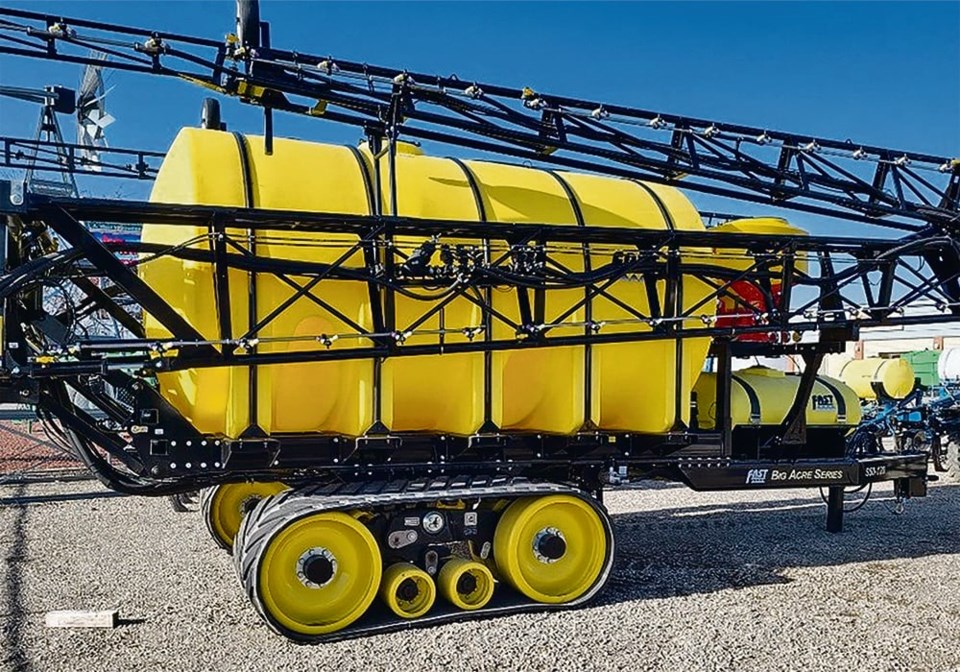WESTERN PRODUCER — The concept of ensconcing one individual seed into one big nutrient-laden liquid droplet, and keeping it safely stable and suspended until it’s sprayed out onto soil, is a mighty challenge.
Hauling the apparatus around in the field is also a formidable task. Nonetheless, it is the sort of thing Bob West at R.A.West does in his quest to improve prairie soil.
His crew began by modifying a Fast Big Acre pull-type sprayer on tracks. It carries a 5,000-gallon tank and 120 feet of suspended booms. A granular applicator was retrofitted along with the necessary modifications to feed a venturi.
The unit was further modified by the addition of a pump incorporated with a venturi to meter seed into the water stream in suspension, enabling it to be discharged in a manner that delivers uniform controlled flow volume.
West said it can seed approximately 170 acres per hour. He expects that will pencil out to about one quarter section per tank.
“Significant research, development and testing was performed to ensure adequate flow to suspend the seedling in the liquid and develop a pattern of water droplets to provide coverage at an increased speed. This ensures uniform seed application. It also eliminates problems experienced with similar past efforts employing seed/water slurries, resulting in inconsistent and uneven seed application.
“This equipment can perform four different applications: herbicide, fungicide and fertilizer, plus this seeding application. The four products lead to the name, QuadApplicator,” West said.
“It allows a farmer to foliar feed an established crop and seed a relay crop into a mono crop that is 60 to 80 days away from harvest. These cover crop seeds will germinate and root but will not interfere with the established main crop. Post-germination, the small plants remain shaded by the mono crop canopy. Because of the lack of sunlight, most plants are inhibited from significant growth, hence no problem with harvest.”
This cover crop or relay crop can remain in place into the next growing season or until the farmer chooses to cultivate it, desiccate it or allow it to grow and become a primary crop.

